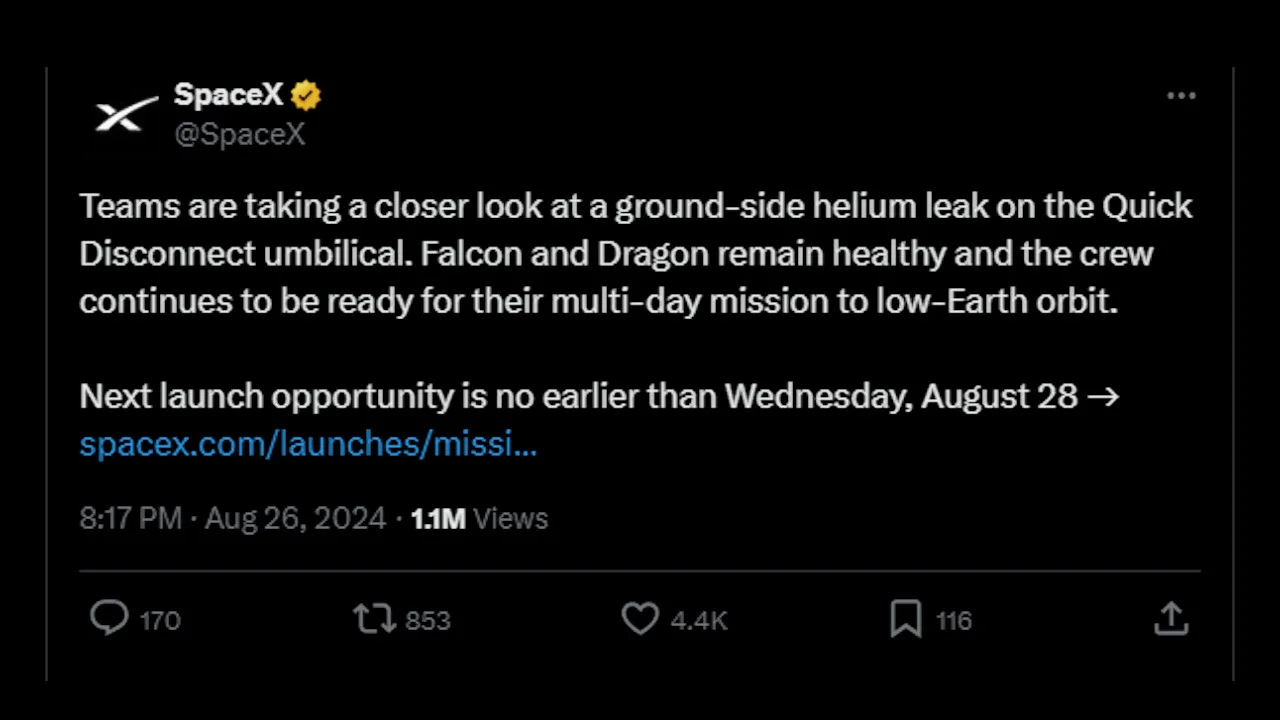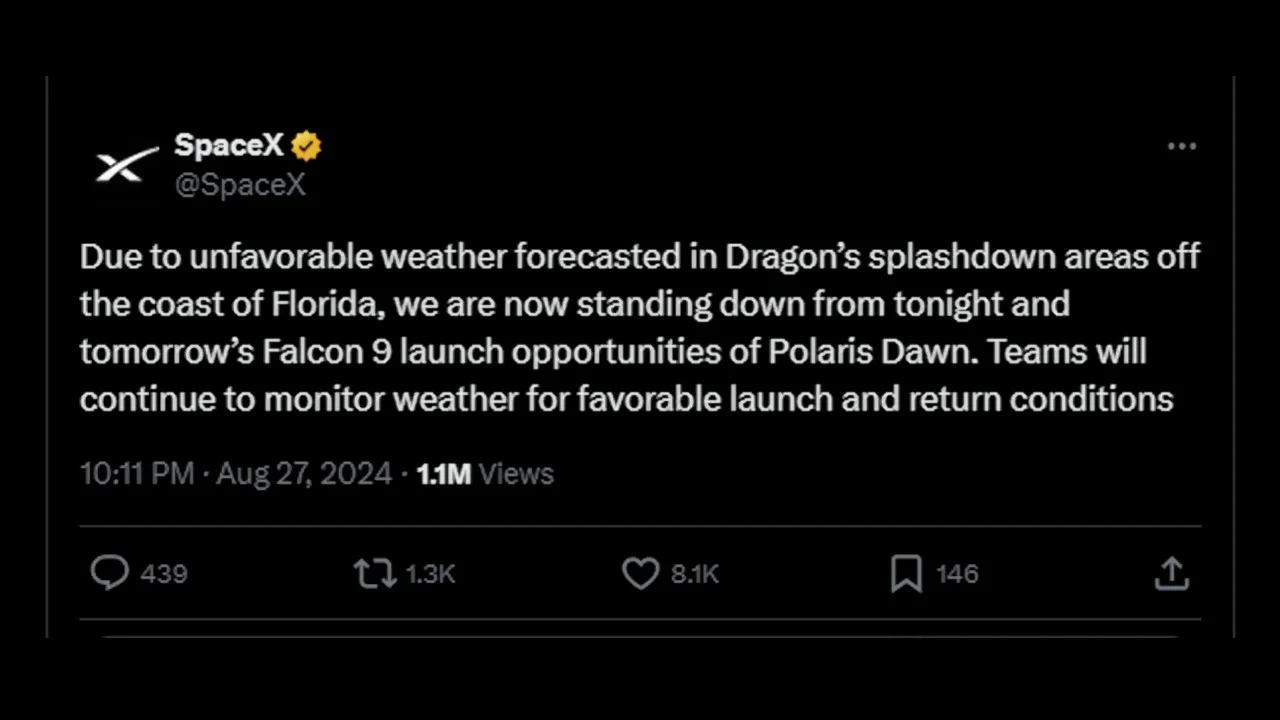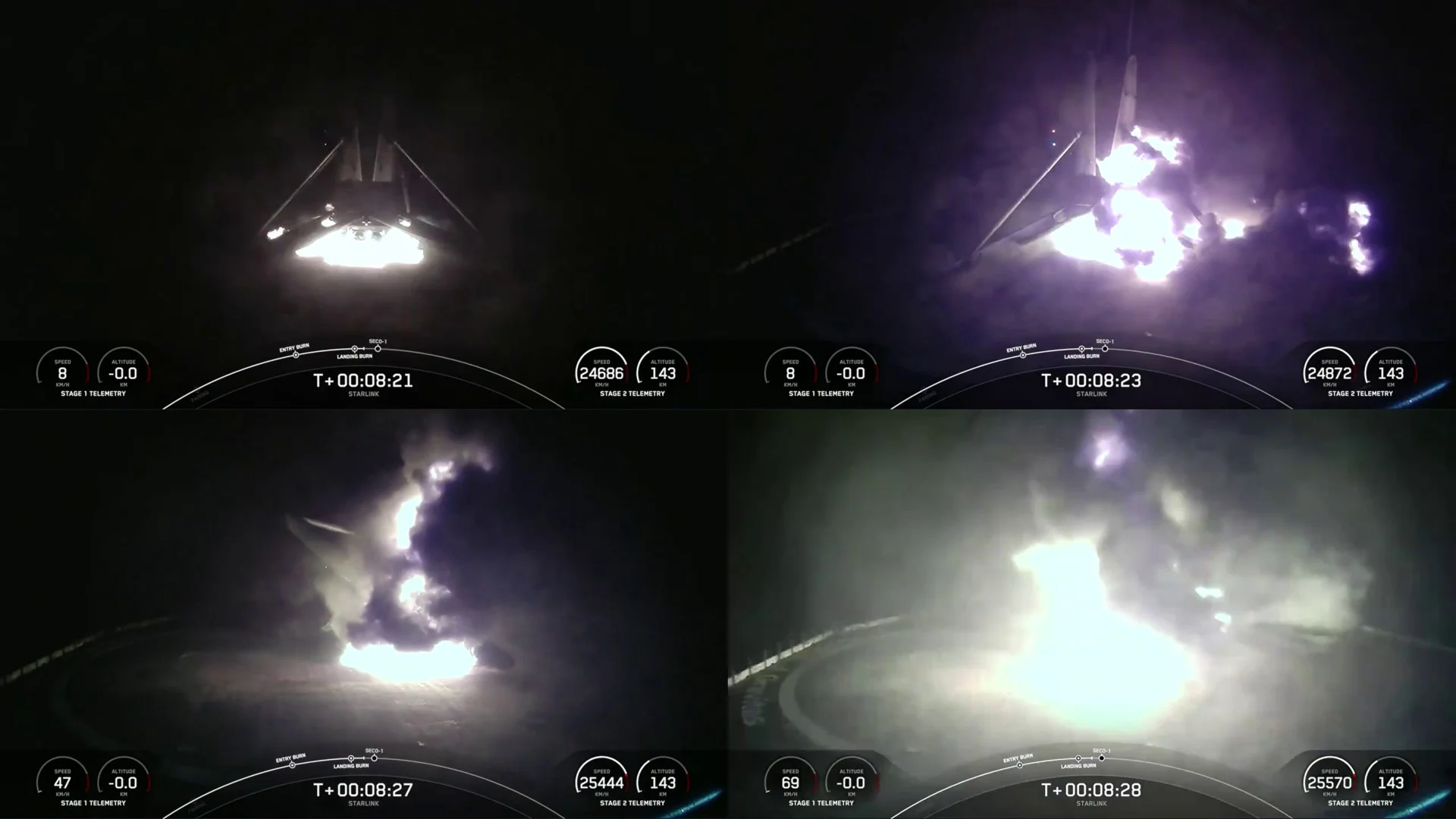
SpaceX's Polaris Dawn delayed indefinitely following Starlink Falcon 9 crash
SpaceX is grounded for now, but will push boundaries in human spaceflight with their next civilian astronaut mission.
The launch of SpaceX's Polaris Dawn mission has been delayed, yet again. First it was a helium leak, then unfavourable weather for the mission's splashdown zone, and now all Falcon 9 rocket boosters have been grounded after one crashed Wednesday morning.
SpaceX is set to make history in a number of ways with the launch of their second all-civilian astronaut flight, if the mission can actually get off the ground.
Similar to the Inspiration4 mission in September 2021, Polaris Dawn will fly a crew of four private citizens into Earth orbit. There, they will conduct science experiments for several days before returning home. Also, just like with Inspiration4, this mission is being led by billionaire Jared Isaacman.
However, that is where the similarities with the previous flight largely end.
Isaacman is joined by three new crew members on Polaris Dawn: Scott "Kidd" Poteet, a retired U.S. Air Force pilot, and Sarah Gillis and Anna Menon, who are both Lead Space Operations Engineers at SpaceX. The four will be pushing the boundaries of human spaceflight with this new mission.

From left to right, mission pilot Scott "Kidd" Poteet, mission specialist and medical officer Anna Menon, mission specialist Sarah Gillis, and mission commander Jared Isaacman, pose in their new SpaceX spacesuits. (Polaris Program/John Kraus (CC BY-NC-ND 2.0))
On their very first day in space, the Polaris Dawn crew will break a 58-year-old spaceflight record as they achieve the highest orbit around Earth ever, at a distance of 1,400 kilometres. For contrast, that is roughly 1,000 kilometres higher than the typical orbit of the International Space Station. It also beats the previous record for farthest orbit, set by the Gemini 11 crew in 1966, by about 30 kilometres.
Additionally, and perhaps even more importantly, Polaris Dawn will feature the very first spacewalk performed by private citizens. Since the first space walks ever conducted — by Alexei Leonov on March 18, 1965, and Ed White on June 3 in that same year — all have been performed by government astronauts. During this mission, the crew will don their spacesuits, depressurize the Crew Dragon spacecraft, and then Jared Isaacman and Sarah Gillis will exit to make history.
READ MORE: SpaceX testing breakthrough tech in risky spacewalk
Launch delay
Polaris Dawn was originally scheduled to lift off from Kennedy Space Center at 3:38 a.m. EDT on Tuesday, August 27.
The night before the launch, the ground crew discovered a technical problem involving a helium leak, which resulted in them delaying the launch until they could properly investigate the issue.

"Teams are taking a closer look at a ground-side helium leak on the Quick Disconnect umbilical. Falcon and Dragon remain healthy and the crew continues to be ready for their multi-day mission to low Earth orbit. Next launch opportunity is no earlier than Wednesday, August 28," SpaceX announced on X (formerly Twitter), Monday night.
SpaceX's Falcon 9 rocket boosters are fueled by liquid oxygen and rocket-grade kerosene. However, helium plays an important role in the function of the rocket, as this gas is used to keep the fuel lines and fuel tanks properly pressurized during flight. This helps the flow of fuel through the engine to remain constant, and also prevents the tanks from crumpling as the fuel is rapidly drained.
Thus, discovering the source of the helium leak and correcting the problem prior to launch will help ensure a safe mission for the crew.
According to SpaceX, they were targeting 3:38 a.m. EDT on Wednesday, August 28, as the next launch window for Polaris Dawn. However, on Tuesday night, the mission team called off both the Wednesday and Thursday launch windows, due to weather.
Launch weather
Although weather conditions were 85 per cent favourable for the launch itself, conditions at the crew's potential splashdown and recovery zone, off the east coast of Florida, raised concerns for the mission's safety.

"Due to unfavourable weather forecasted in Dragon's splashdown areas off the coast of Florida, we are now standing down from tonight and tomorrow’s Falcon 9 launch opportunities of Polaris Dawn. Teams will continue to monitor weather for favourable launch and return conditions," the company said in an update.
Weather conditions are closely monitored before and during launch procedures of any rocket from Kennedy Space Center. Forecasters observe several Lightning Launch Criteria, to avoid a rocket being struck during liftoff. They also keep an eye on the long-range forecast, for when the spacecraft will splash down upon its return to Earth.
READ MORE: What happened when two bolts of lightning struck Apollo 12
In most cases, the return time for a spacecraft is weeks to months after launch.
In this instance, though, Crew Dragon Resilience will return the Polaris Dawn astronauts to Earth in a matter of days. Currently, the mission is expected to return five days after lift-off.
"Our launch criteria are heavily constrained by forecasted splashdown weather conditions. With no ISS rendezvous and limited life support consumables, we must be absolutely sure of reentry weather before launching. As of now, conditions are not favourable tonight or tomorrow, so we’ll assess day by day," Jared Isaacman said on X, Tuesday night.
As of Wednesday morning, SpaceX had not set an updated launch window for the mission.
Booster crash and FAA investigation
Polaris Dawn suffered another setback on Wednesday, which has delayed the mission indefinitely.
SpaceX had two Starlink satellite launches scheduled for August 28, 2024 — one lifting off from Kennedy Space Center in Florida and another from Vandenberg Space Force Base in California.
The Florida launch blasted off without incident and delivered its payload of 21 satellites to orbit. Upon landing, though, the Falcon 9 booster rocket tipped over and exploded.

Four frames from the livestream of Wednesday morning's Starlink launch shows the Falcon 9 booster rocket touch down on the A Shortfall of Gravitas droneship in the Atlantic Ocean, then apparently catch on fire, tip over, and cause a small explosion. (SpaceX)
"After a successful ascent, Falcon 9's first stage booster tipped over following touchdown on the A Shortfall of Gravitas droneship. Teams are assessing the booster's flight data and status. This was the booster's 23rd launch," SpaceX posted on X, Wednesday morning.
Following the crash, the U.S. Federal Aviation Administration (FAA) grounded all Falcon 9 rockets until they can conduct an investigation.
"A return to flight of the Falcon 9 booster rocket is based on the FAA determining that any system, process or procedure related to the anomaly does not affect public safety," the FAA said in a statement. "In addition, SpaceX may need to request and receive approval from the FAA to modify its license that incorporates any corrective actions and meet all other licensing requirements."
There is no word yet for how long the FAA's investigation will take. Check back for updates on this historic space mission.
Editor's note: a previous version of this article incorrectly reported that the weather constraint that caused the second delay for Polaris Dawn was for the splashdown zone the Crew Dragon would use in the case of an aborted launch. The delay is actually due to the weather conditions forecast for the zone off the coast of Florida where the crew capsule would splash down at the end of the mission. This has now been corrected. We apologize for any confusion.











